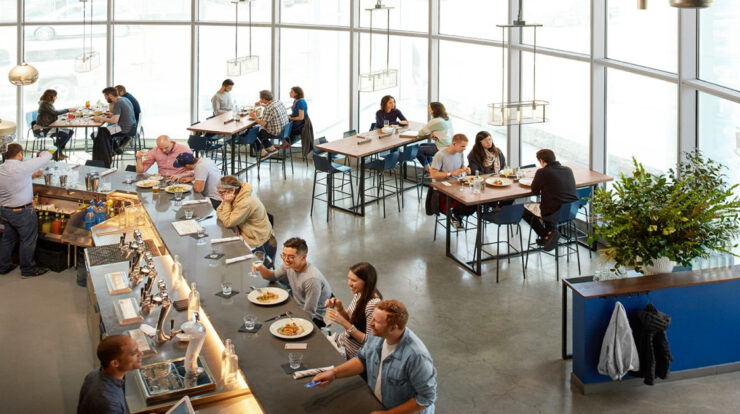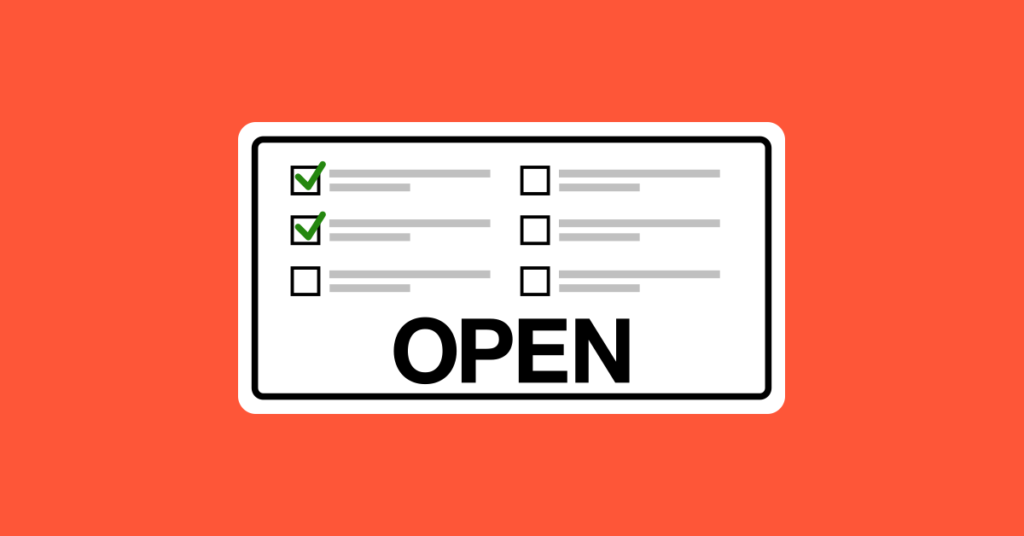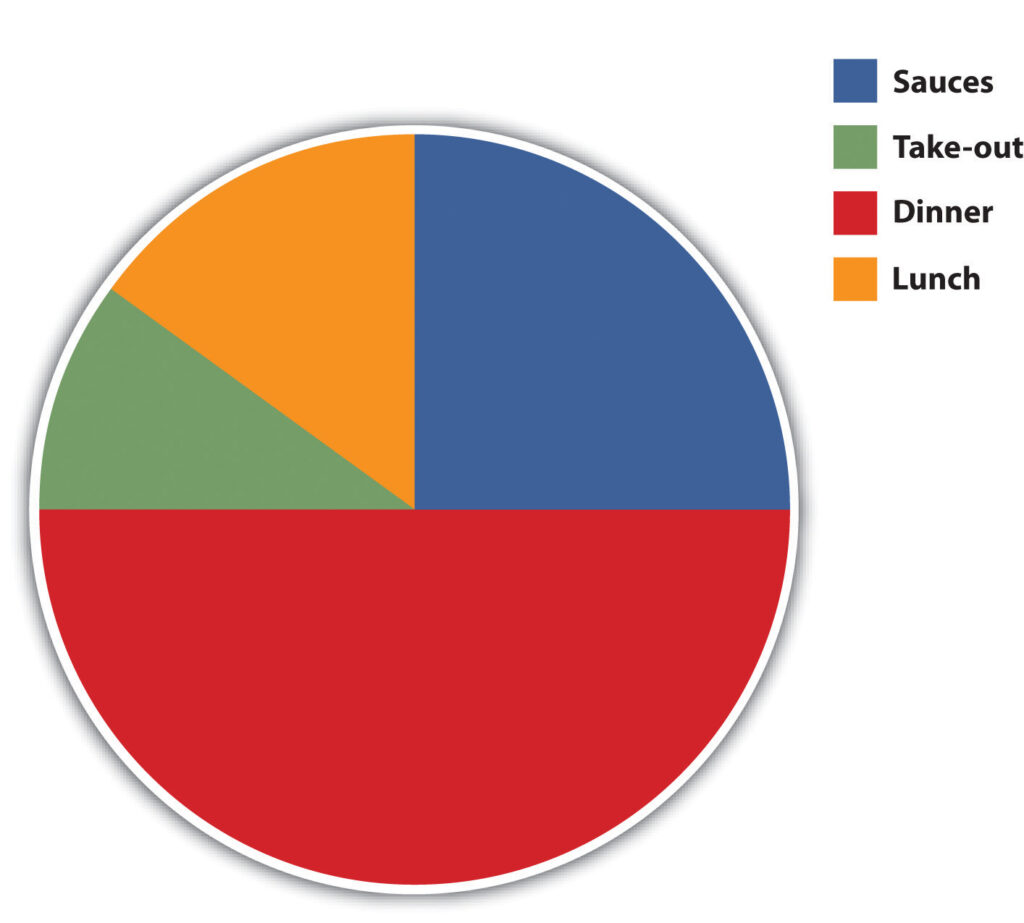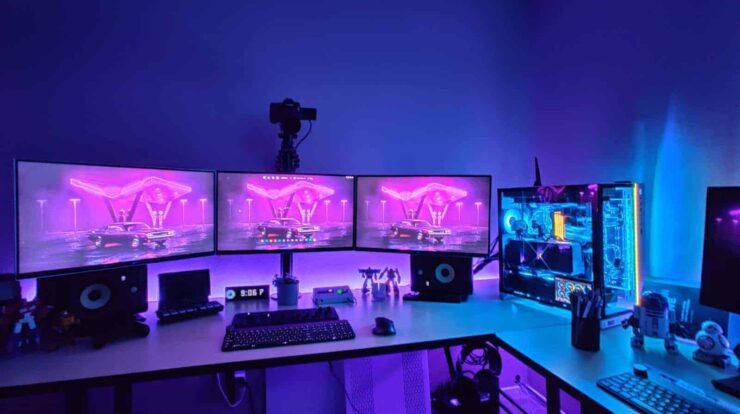
This post is part of our Restaurant Business Startup Guide, a collection of articles to assist you in planning, starting, and growing your restaurant! If you’ve wanted to open a restaurant for a long time, now is the time to settle down and make a business plan.
We’ve put up a how-to-get-started guide to ensure you have all the elements you need to confidently establish your business. While the set restaurant is thrilling, it is also time-consuming and one of the most difficult businesses to launch. In reality, 60% of restaurants fail during the first year of operation you can also see how to start a small restaurant.
In this article, we know about how to start a restaurant business and operating methodology so continue reading learns more about the restaurant business.
Opening a Restaurant Checklist / How to Start a Restaurant

Create A Concept For Your Restaurant
From the food to the way you serve customers, your restaurant concept should be weaved into every part of your operation. The name of your restaurant, the design of your collateral, and the decor should all reflect your concept.
Put Together A Restaurant Business Plan
The cornerstone of your operations should be laid out in your business strategy. Include an executive summary, a firm description, an industry analysis, a geographic analysis, a target market analysis, a food safety plan, a sample menu, a marketing plan, a management strategy, and a financial plan, among other things, make your own restaurant.
Look Into Different Funding Possibilities For Your Restaurant
To figure out how to fund your restaurant, look at the starting and operating costs. There are several choices to explore, ranging from hiring an investor to obtaining a small company loan. To acquire a better grasp of your predicted cash flow, determine your break-even point and construct a financial analysis and build your own restaurant.
Obtain The Necessary Licences And Permits To Operate A Restaurant
The best way business Aside from the basic business licenses and permits, there are additional licenses you’ll need if you own a restaurant, ranging from a liquor license to a food handler’s license, which differs by state. Make sure you research food safety legislation and make a list of the requirements you must follow.
Register Your Company
To get your Employer Identification Number, which you’ll need to submit taxes, you’ll need to register your firm with the IRS. You might also consider trademarking your restaurant’s name (to prevent others from imitating you and profiting from your success).
Decide On A Suitable Place
The location of a restaurant may make or destroy it. During the choosing process for a commercial space, visibility and foot traffic are two crucial elements to consider. You should also consider the size and shape of the inside to see if it is a good fit for your restaurant’s layout.
Place An Order For Restaurant Equipment
Restaurant equipment can be costly, so you’ll want to choose wisely when purchasing or leasing it. From kitchen equipment to dining room decor, make a list of everything you need vs what you want, depending on your menu. Make judgments based on your financial analysis and budget.
Hire The Best People For The Job
Make a list of how many people you’ll need to run your front and back of house smoothly. Then it’s time to hire. You should also decide whether you want to process payroll yourself or employ payroll software while you’re at it. Keep in mind that restaurant payroll can be complicated, especially with varied state/federal/local wage and tip laws and regulations.
Put Together A Menu
Your restaurant’s menu is the focal point, and it should reflect your concept and brand. However, it can also be used as a marketing technique to persuade new customers to try your business. Your descriptions should be brief but engaging for your target audience.
Create A Marketing Strategy
It’s critical to construct a marketing plan before opening a restaurant that raises awareness, attracts new customers, and builds a devoted following. You might utilize a variety of marketing strategies, from social media to a soft opening to generate buzz.
Read more: Top Most Expensive Car
Segments Of The Restaurant Business

How much do restaurant owners make: When it comes to launching a restaurant, knowing where a restaurant belongs in the industry will help you better grasp the competitive landscape and plan your entry into the market as well as your food license how to start a food business to a luxury three-star Michelin dining experience, establishments can be loosely divided into numerous segments:
How to Start a Restaurant and Types of Restaurant
Fast food restaurants, sometimes called quick-service restaurants (QSRs), specialize in speedy preparation and casual service. Because most customers order at the register and take their food to go, seating is restricted.
Fast-casual restaurants are similar to fast-food restaurants in that they do not typically offer sit-down service, but they do typically offer freshly cooked nutritious cuisine. As a result, their food costs are typically greater than those of QSRs. Fast-casual restaurants generally provide utensils and plates, which sets them apart from QSRs.
Customers can enjoy a full-service, sit-down experience at a low cost with casual dining. Customers may come in, sit down, and enjoy a meal without breaking the wallet thanks to the calm ambiance.
The structure of family eating is similar to casual dining, although most locations do not sell alcohol. Breakfast, lunch, and dinner are frequently served in a family setting.
Customers can enjoy an elegant and expensive eating experience at fine dining places. While the prices at these restaurants are higher, customers are paying for high-quality cuisine and the best service the industry has to offer I food license Food want to start my own business.
An Overview Of Food Safety And Handling In Restaurants
How much does it cost to start a restaurant?
It’s critical to understand the restaurant industry as a whole before digging into the procedures of opening a restaurant. Restaurant safety and food handling regulations are important priorities for the industry, so you should familiarise yourself with them before opening a restaurant.
The restaurant sector is extensively regulated at the city, state, and federal levels to keep visitors safe and avoid food-borne illnesses. Several federal agencies play an important role in the business, including:
Food Safety and Inspection Services of the Food and Drug Administration (FDA) and the Centers for Disease Control and Prevention (CDC) (FSIS)
Depending on where you want to start a restaurant, city and state rules differ. If you’re considering multiple locations, keep in mind that each restaurant may have its own set of compliance requirements. Keep up with federal agency recommendations and new training tools produced by these agencies, as well as your restaurant’s state rules.
A restaurant may be subjected to a number of inspections in order to ensure its safety and operational compliance. An initial restaurant inspection may involve a number of food safety measures and assess a restaurant’s ability to handle food, store food, maintain employee hygiene, and operate efficiently.
Following-up inspections are common throughout the year, so you’ll want to develop best practices for food safety and restaurant sanitation.
Restaurant operators can protect their reputation and consumers by familiarising themselves with rules, getting particular industry-related permits, and following basic food safety standards.
Read more: Business Ideas For Kids Without Investment
The Expense Of Opening A Restaurant
The majority of people who are thinking about operating a restaurant want to know how much it costs to open a restaurant. Although it appears to be a straightforward topic, the truth is that there is no one-size-fits-all answer to how much it costs to open a restaurant. The cost of opening a restaurant is determined by a number of factors, including:
- The restaurant’s size
- Restaurant Types (see above)
- Restaurant Real Estate Number of Employees
- Starting a restaurant is usually a costly endeavor, and poor forecasting and planning are common causes of business failure. Learn what costs to expect and how to keep costs low to forecast a realistic budget and avoid these problems.
- You may discover after a long day of crunching data and negotiating rates that you don’t have the funds to cover these expenses right away. Don’t worry, there are a variety of financing solutions available to restaurant operators.
Remember that even if you don’t require a loan to start your business, you may require one for future expenses such as inventory or new equipment, remodeling include, or employment.
Getting Money From Customers
Understanding the restaurant market and budgeting for a restaurant are the first steps toward success, and now it’s time to concentrate on collecting payments from clients.
When you initially open a restaurant, making your first sale is an exciting milestone, and it should be a frictionless experience the first time and every time after that. You’ll need to pick a payment processor and point-of-sale (POS) software to accomplish so.
Your business’s credit and debit card transactions are handled by a payments processor. Look for a payment processor that takes all major credit cards, has a flat rate (no hidden costs), and has speedy deposit times.
An easy-to-use point-of-sale system allows you to start accepting payments right away, and it can grow with your business (and help it grow). Not only can you accept all forms of payments — including magstripe, EMV chip, and NFC (mobile payments) — but an integrated restaurant point of sale can also help you manage your business more efficiently.
A restaurant POS system can assist you with the following tasks:
- Ingredients and supplies are better forecasted with inventory tracking
- Built-in tipping that significantly boosts tip flow
- Reconciliation of tips is done automatically.
- Modifications to the menu to accommodate modifiers and other requests
- Employee timesheets that make it simple to keep track of hours worked
- Data analytics provide you with more information to help you make better decisions
- Customer feedback and insights are available right away
- Management of several menus
- Floor plans that can be customized
- Servers and chefs must communicate clearly and efficiently
- Outdated, slow POS systems can stifle sales, so it’s critical to invest in capabilities that are quick for customers, simple to use for employees, and efficient for your restaurant as a whole
- All of your data, from sales and inventory to staff timecards, is in one place with an integrated POS, making it much easier to stay organized and make better decisions.
Creating A Restaurant’s Brand
How can you compete with more established eateries for customer loyalty and attention? You must establish a brand.
Branding your business is an important component of starting a restaurant, and it can help you expand and thrive in the future. Your brand is what sets you apart from the competitors. And it’s what sets your business apart, and it’s often the determining factor for diners in a world of countless choices.
Here’s a Quick Primer On How to Start Branding Your Restaurant:
Begin With The Positioning
To assess where your restaurant startup amid the competitors and to identify your unique selling proposition for your target clients, evaluate the product, placement, promotion, and price of your restaurant.
Create A Concept And A Location For Your Project
Your restaurant’s positioning should be influenced by its idea and location. Many of the decisions you make moving forward, from the sort of food to the interior design and even the staffing, are influenced by your concept. Location elements that affect your placement include neighborhood stereotypes, accessibility, and local rivals.
Make A Mission Statement For Your Company
What you do, who you are, and why you do it are all defined in your mission statement. It should be the north star of your restaurant, and all decisions should be made in accordance with it to ensure a consistent experience.
Maintain A Level Of Consistency In The Details
Your brand is communicated in every aspect of your organization. So, in order to develop a distinct and memorable brand, you must examine every element for consistency. That involves examining your restaurant’s visual aspects — its name and logo, menus, decor, uniforms, and so on — as well as its written elements (or brand voice) — your website and other marketing channels such as social media — to ensure they match your objective.
All of your data, from sales and inventory to staff timecards, is in one place with an integrated POS, making it much easier to stay organized and make better decisions.
Maintain A Gentle Opening
The exclusivity of a soft opening attracts attention and gets people talking about your restaurant, which is crucial for creating buzz. Additionally, the soft opening allows your team to gain some practice and allows you to finalize menu items and collect feedback before anything is set in stone. Come up with soft opening launch ideas that will blow your rivals away and offer you an advantage when it comes time to open your doors.
Read more: Best Lead Generation Companies To Know
Promote Your Eatery
You can market a restaurant through a variety of means. Traditional channels, such as television, are expensive yet reach a large audience. Social networking, content marketing, and email are all low-cost digital channels that perform a better job of engaging (and creating connections with) potential customers.
You should experiment with various channels to determine which ones work best for you (it may be a combination of both), but regardless of the medium, you should incorporate your brand’s graphics and voice into all of your marketing.
Create A Devoted Following
A customer loyalty program finalizing remodeling include customized organizers are rewarded for returning, can restaurants be an effective tool. It has the potential to turn a one-time customer into a repeat customer and a brand advocate.
And advocates are extremely valuable to your business because they spread the word about your restaurant to their friends. And the influence of word-of-mouth is undeniable: Customers value recommendations from friends and family more than any other sort of marketing, according to a Nielsen survey.
Restaurant Trends To Keep An Eye On
Restaurant operators are responsible for staying on top of industry trends, which include more than just the current cuisine fads. Technology is assisting restaurants in providing the best possible customer experience, and it is becoming a bigger component of the sector. Here are a few new restaurant trends to keep an eye out for.
Customer Feedback Is Available Right Away
Incorporating feedback into the dining experience allows guests to review their experience via their digital receipt, providing your business with the real-time data it needs to improve. Restaurant operators may acquire a better knowledge of what their customers want by using feedback, which is one of several customer engagement elements.
Accepting Mobile Wallets As Payment
Mobile wallets, such as Apple Pay, have grown in popularity and are influencing the future of payments. Accepting mobile wallets has a number of advantages, including greater security, speed, and convenience.
Services For Delivery
Many restaurants are experimenting with food delivery services in order to reach a larger consumer base. This opens up a whole new market for your business and can help you stay competitive with others that use the same services.
Ordering Is Done At Your Leisure
Tableside contact-free ordering is gaining popularity as the restaurant industry continues to explore automation. Diners may scan QR codes to order food and drinks as well as pay for their meal without having to deal with a server.
Bottom Line Of How To Start A Restaurant
How to start a successful restaurant business? There was no restaurants planning. You’ll spend a lot of time planning out every component of your restaurant before you ever serve a customer dinner. The planning stage will determine whether your restaurant succeeds or fails, from kitchen appliances and menus to floor plans and staffing choices. All ideas and plans are mentioned above how to start a restaurant?




